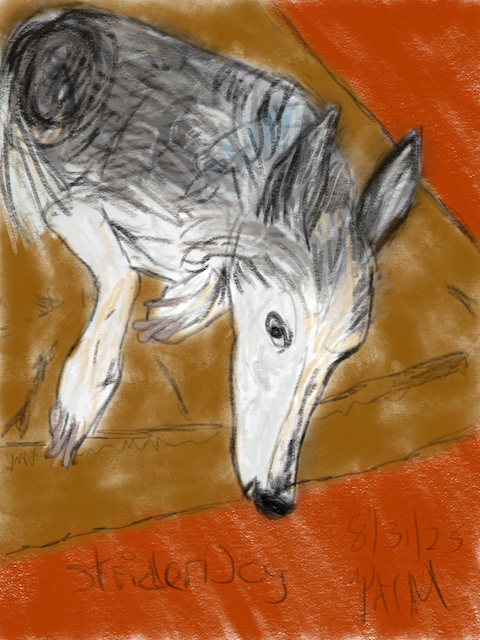I had the pleasure of hosting dance for Caer Mear’s “Celebration de Medici” event on February 17th, 2024. What follows is my dance list and thought process in selecting dances for the event. I’ve linked descriptions for those dances I have uploaded on the site. (I know! I need to get the dance pages fixed.)
Introduction
Most of the dances that we know of from the 15th century come from the treatise of Maestro Domenico da Piacenza, written around 1455. Domenico’s primary patron was Leonello d’Este, Marquess of Ferrara but he was also a dance master for a very important connection of Cosimo’s, Francesco Sforza. Francesco was a condottiere who with the support of Cosimo took over the Duchy of Milan by marriage to the duaghter of Duke Visconti in 1450. We know that Maestro Domenico composed dances for the weddings of Francesco’s children in the 1450s.
Another dance master strongly connected with the court of Francesco in Milan in this time was Guglielmo Ebreo. (He later converted to Christianity and changed his name to Giovanni Ambrosio). He wrote two treatises on dance, the first of which was from this same era in the 1450s. Much of it contains the same dances and other dances attributed to Maestro Domenico. I’ve included two of those as well as one of his original choreographies.
The marriages of Francesco’s children where these dances were performed created alliances between Milan and Naples. Through this network of powerful allies, Cosimo created a balance of power in Italy between Florence, Milan, Venice & Naples that allowed for a time of (relative) peace in which the arts could flourish.
Set 1: Perfect Major
In music notation of the time, the terms perfect/imperfect and major/minor were used to denote the time signature of pieces. Perfect and major were triplet relationships, while Imperfect and minor were duplet relationships. The first set of dances I have nicknamed “perfect major”. This would be a 9/8 time signature in modern terms. All of these dances are for multiples of 3 people.
- Belfiore by Domenico, for lines of 3 people
- Jupiter by Domenico, for lines of 3 people
- Spero by Guglielmo, for 3 people in a row
- Gelosia by Domenico, for 3 couples
Set 2: Imperfect Minor
This set is called “imperfect minor” which would be a 2/4 time signature because all the dances are for 2 or 4 people.
- Petit Rose from Guglielmo but attributed to Domenico, for 2 people
- Lioncello by Domenico, for 2 people
- Rostiboli Gioioso from Guglielmo but attributed to Domenico, for 2 people
- Anello by Domenico, for 2 couples
Set 3: Perfected Minor
These dances are versions for three people of dances for two we already learned.
- Lioncello Novo by Domenico, for 3 people in a row
- Gioioso in Tre by Giovanni Ambrosio, for 3 people in a row
Reflections
I really need some time to get the dance pages on here finished. I would like to have my work in reconstructing them which is currently spread out across multiple physical notebooks, Evernote, Google docs and emails in one place. I would to have short-hand and more in depth directions for each dance easily accessible. It would have been nice to easily copy-paste all that into a dance booklet for this event. I do have a hand-written notebook for these dances, where I have my shorthand versions to refer to when teaching my regular dance practice. That’s not great for a scenario like a ball.
On the day I had about 12 dancers join me, with varying levels of experience in historical dance. We did not quite follow my set-list as written. We did the first set, and then after the break dance Petit Rose and Rostiboli Gioioso from the second set, and then wrapped up with Gioioso in Tre. That was a lot in 2 hours!
I originally had the sets switched in order and also had 3 sets of 3 dances each. I rather wish I’d kept that plan … 4 dances in a set seems reasonable for a set if you can just do them, but when you are teaching every dance it is a lot. I also think Petite Rose would have been an easier introduction for the newer dancers.
Clothes!
Like many other people, I’ve had some weight and body composition changes since the coronavirus pandemic. Unfortunately that means that much of my finest 15th century Italian clothing does not fit any more. I have also not really been able to fix that problem since I was in a car accident last August and injured my wrist. I am only slowly returning to crafting as I am still going through physical therapy and treatment from my wrist surgery.
In light of all that, the idea of what to wear for this event was a bit terrifying!
But, I lucked out! My mid-15th century masculine outfit still fit pretty well after all. It was fun to dance in too!






